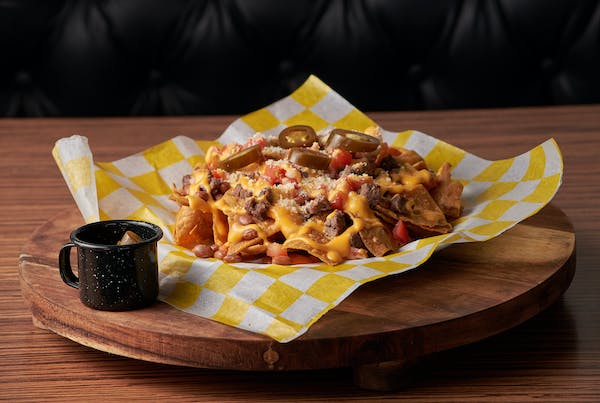Disposable placemats and tablecloths made of paper are often used in gastronomy. However, since disposable tableware seems to have become generally discredited, some voices are also raised against single-use paper placemats in the hospitality and restaurant industry. Hygienic helpers for some, unnecessary polluters for others… In the following article we will take a closer look at the controversial topic.
Are paper placemats bad for the environment?
The answer is relatively simple: not if they are biodegradable and the end products of sustainable forest management. Of course, today we are all keen to avoid unnecessary waste. However, there is a big difference between plastic plates and compostable paper placemats. In addition, the possible alternatives in gastronomy should also be considered. Because reusable does not necessarily mean environmentally friendly. Many proponents of traditional fabric tablecloths forget that they need to be washed, dried and ironed. What seems unproblematic in private households looks completely different in the hotel and restaurant industry. Since the tablecloths get dirty quickly and are of course changed between different guests for reasons of hygiene, in gastronomy, after breakfast, lunch and dinner, you have to deal with veritable mountains of laundry that have to be dealt with day in and day out. The water and electricity consumption for cleaning the fabric tablecloths is definitely a problem for the environment. Not to mention the frequent use of bleach and detergents, which are very rarely ecological. With this in mind, using sustainable, biodegradable paper placemats is undoubtedly the most environmentally friendly solution. Not to mention the frequent use of bleach and detergents, which are rarely ecological. With this in mind, using sustainable, biodegradable paper placemats is undoubtedly the most environmentally friendly solution. Not to mention the frequent use of bleach and detergents, which are rarely ecological. With this in mind, using sustainable, biodegradable paper placemats is undoubtedly the most environmentally friendly solution.
Made of paper but still of high quality
When you hear the word paper placemat for the first time, you might think of flimsy, wafer-thin sheets of paper that tear at the slightest resistance and soften after the first drop of water. However, paper does not in any way mean that it is an inferior product. Just as there are different levels of quality for paper serviettes, from the simple kitchen roll to the pleasantly soft, multi-ply luxury serviette, there are also high-quality products for paper placemats whose material properties are more reminiscent of fabric than a simple sheet of paper.
Where to buy high quality, eco-friendly placemats?
Of course, placemats are not just placemats. While many disposable placemats appear to be made from biologically safe paper, don’t jump at the first offer that comes along. Because the dyes used for the imprints and the coatings on the surface can contain toxic substances. Organic labels and certifications are therefore important guarantees that should not be taken lightly. If only because the paper placemats can come into contact with the food. And the paper itself is far from being bleached from sustainable forestry and chlorine-free. Tear resistance and print quality also play an important role. High-quality, environmentally friendly and certified disposable placemats,
Why are disposable placemats so popular?
In addition to the already mentioned environmentally friendly washing savings, disposable placemats offer a whole range of useful advantages:
– Stain and scratch protection of the table surface
– Rapid exchange in “accidents” and between different guests
– always up-to-date, as variable design
– hygienic
– flawless
Anyone who works in gastronomy knows how quickly sauce splatters or cutlery slips off the plate. A place mat effectively protects the table from stains and scratches. Furthermore, placematsexchanged very quickly, be it between different guests or when a glass falls over. But when it comes to design, it is definitely worth using paper placemats. Depending on the season, event and current decoration, you can choose between different color patterns and motifs. This variable table decoration regularly brings a breath of fresh air to the overall look of the restaurant and delights the customers. However, the most important advantages of disposable placemats are impeccable cleanliness and impeccable hygiene. Because even well-washed fabric tablecloths show unsightly stains or fading over time, and allergy sufferers can react to house dust mites if the tablecloths are not washed daily at 95°C.
Paper placemats versus paper tablecloths
Paper placemats are rectangular, individual placemats that can accommodate a single guest’s plate, glass and cutlery. Paper tablecloths, on the other hand, cover the entire table surface like traditional cloth cloths. Whether you opt for environmentally friendly disposable paper tablecloths or paper placemats depends on the size of the table on the one hand and the desired table decoration on the other. While it is probably better to choose individual placemats for small bar tables, paper tablecloths are popular on spacious, elegantly set restaurant tables. In general, placemats look a bit more modern than paper tablecloths. Paper placemats are undoubtedly more practical when only one place at the table needs to be replaced. For example, if a glass falls over at the end of the table, a single soaked placemat can be quickly replaced without disturbing the entire table with laying a new tablecloth. Incidentally, ecological paper tablecloths and table runners are also available from Dishio: https://einwegchina-bio.de/gastronomiebedarf/papiertischdecken-tischlaeufer
Conclusion
Disposable placemats made of paper are neither unnecessarily cheap goods nor do they necessarily pose a risk to the environment. Today, they have a firm place in gastronomy and avoid countless washing and drying processes of traditional fabric tablecloths. If you are concerned about the environment and the well-being of your guests, you can also use products that are high quality, sustainable and biodegradable.

